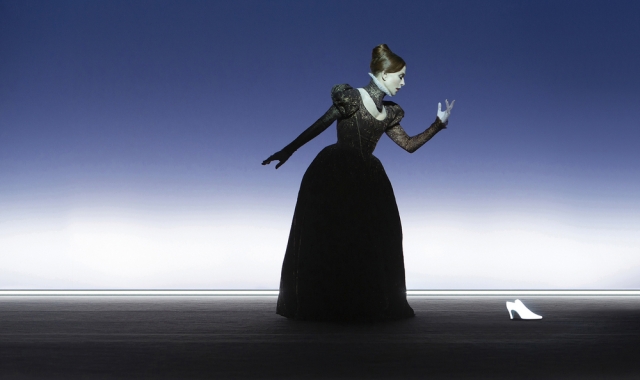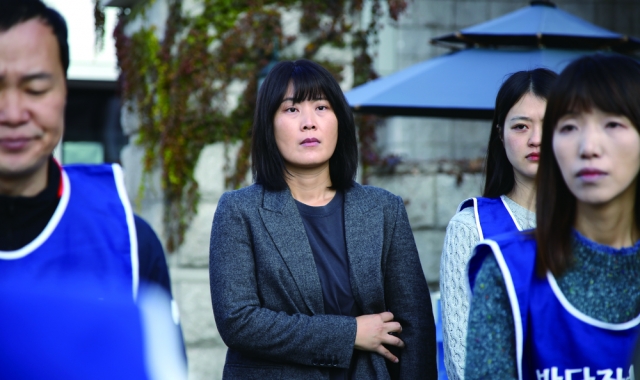
최근 두달 내에 있었던 영화제에서 잘 알려진 홍콩 감독이자 프로듀서와 이야기를 나누는 중, 요즘 늘 그렇듯 열악한 업계 상황으로 얘기가 이어졌다. 필자는 홍콩영화에 대해 늘 낙관적인 견해를 가지고 있었지만, 지난 몇년간의 이른바 ‘위기’- 감소하는 입장객과 제작편수와 시장점유율은 이전의 위기와는 다르다. 훨씬 깊은 곳에 들어앉아 갉아먹어들어가는 형태로, 지금껏 보기에 금방 해결되지 않는 것이다.
‘위기’의 일부는 상상된 것이다. 홍콩의 재능 기반은 (특히 중국 본토로) 넓게 퍼져 있기 때문에, 이전 모습처럼 팽팽하게 응축된 핵에너지가 하나의 자그마한 영토에서 발산되는 것이 덜 가시적일 뿐이다.
새로운 감독들이 모자란 건 아니지만, 현재 상황에서는 80년대 원래 뉴웨이브와 90년대 포스트 뉴웨이브의 부상을 초래했던 결정적인 수준에 이른 이가 적다. 홍콩은 이제 동아시아와 동남아시아영화의 기관실로 지내기보다는 그저 테이블을 둘러싼 또 한명의 플레이어인 것으로 만족해야만 한다. 그러나 홍콩이 국제무대에서 두드러진 모습을 점차 잃어가는 데는 더 깊이 자리한 이유가 있다. ‘중산층화’가 되었기 때문이다.
30년 전 서구영화가 창조의 위기를 겪고 있을 때 홍콩영화는 대담하고 과감하고 엉뚱하고 과잉된 영화를 내세웠다. 당시 영화제작의 ‘기존’(다시 말해 할리우드의) 규칙을 서사구조에서부터 촬영 스타일까지 모두 깨버렸다. 정치적으로 ‘공정한 시각’이 서구영화를 옥죄고 있을 무렵 홍콩영화는 ‘품위’의 관습을 경쾌하게 무시하는 모습을 보였다.
규칙을 다시 쓰는 영화감독의 능력은 액션영화에 힘을 불어넣었고 드라마의 강렬함을 새로운 수준으로 끌어올렸다. 이들은 ‘좋은 취향’의 용인된 규범들을 모두 뒤집어버린 그 유명한 90년대 초반의 ‘Category3’(강간, 잔인한 폭력 등을 담은 R등급에 해당하는 성인용 영화- 역자)용으로 만들어진 영화들 즉, <적나고양>(Naked Killer), <언톨드 스토리>(The Untold Story), <약살>(Red to Kill)과 같은 영화들에서 절정을 이뤘다. 이들은 홍콩의 노동자층 관객 대중에 직접적인 호소력을 주는 영화들이었다.
최근에 우연히 이런 영화들 몇편을 다시 보았다. 겨우 10년이 지난 지금, 이런 영화가 만들어진다는 것은 거의 상상할 수 없는 일이 되었다. 홍콩 자체도 변했고 홍콩영화도 그와 함께 변했다. 영화제작은 이제 좀더 안락한 중산층을 타깃으로 삼으며, 그 계층의 가치들을 채택하여 지지한다.
이런 변화는 몇년간 계속 이루어지고 있었던 것이다. 90년대 후반 임영동 감독이 심야상영이 활력을 잃어가는 것에 대해 탄식했던 것을 기억한다. 지난날에는 심야상영이 무시무시한 것이었다고 했다. 대부분이 노동자층이고 간간이 깡패들이 섞인 관객은 영화가 마음에 들지 않으면 야유를 퍼붓고 ‘우우’ 소리를 지르면서 먹고 있던 해바라기씨를 뱉어버리곤 했다고 했다. 이제 관객은 예의 바르게 앉아서 팝콘을 먹고 있을 뿐이라며….
풍족하고 교육도 받고 도시화된 중산층의 부상은 어떤 나라에서든 늘 영화를 변화시키게 마련이다. 70년대 유럽에도 이른바 ‘베이비붐’(2차대전 전후 태어난- 역자) 세대들이 주요 관객층이 되자 유사한 일이 일어났다. 홍콩에서는 80년대와 90년대에 그런 일이 일어났고, (늘 대중적이고 노동자층, 농촌 관객의 요구에 맞춰왔던 발리우드에 파장을 일으키면서) 인도에서도 그런 일이 일어나고 있으며, 또 중국에서도 그랬다.
한국영화의 부흥 또한 매우 중산층적이다. 그렇지만 지금까지는 폭력과 성, 기본적 감정들의 많은 용인된 규범을 위반하면서 위험을 무릅쓰는 수용력에 힘을 받아왔다. 그것이 바로 한국영화에 지속적인 활력을 불어넣어준 것이다. 그러나 전 지구적으로 중산층이 확산되고 있는 이때, 그런 활력은 결코 당연한 것으로 여겨져서는 안 될 것이다.
At one festival, during the past couple of months, I was talking to a well-known Hong Kong director-producer, and talk turned - as it always does nowadays - to the poor condition of the industry. I've always been an optimist about Hong Kong cinema, but the so-called "crisis" of the past few years - shrinking box-office, shrinking production, shrinking market share - is different from previous ones: this is a more deep-seated, gnawing one, apparently immune to any quick fix.
Some of the "crisis" is imagined. As Hong Kong's talent base has become more widely spread (especially into mainland China) the industry is simply less visible now as a tight nucleus of energy emanating from one tiny territory.
There's no shortage of new directors, but in the present situation few have developed the critical mass that gave rise to the original New Wave of the '80s and the post-New Wave of the '90s. Rather than being the engine-room of East and Southeast Asian cinema, Hong Kong now has to be satisfied with being just another player at the table.
But there's a deeper reason why Hong Kong has been slowly losing profile on the international stage: it's become "middle-classed".
Thirty years ago, when western cinema was going through a crisis of invention, Hong Kong cinema was bold, brassy, outrageous, over-the-top; it broke all the "established" (i.e. Hollywood) rules of film-making, from narrative structure to shooting styles; and as political correctness started to strangle western cinema, Hong Kong cinema showed a blithe disregard for the norms of "decency".
Filmmakers' ability to rewrite the rules energised action cinema and took drama to new levels of intensity, climaxing in the famous "Category III" productions of the early '90s - movies like "Naked Killer," "The Untold Story," "Red to Kill" - that demolished all the accepted norms of "good taste". These were films that spoke directly to the mass of Hong Kong's working-class audience.
By chance, I recently watched some of these again, and it now seems inconceivable, only 10 years later, that these could be made today. Hong Kong itself has changed, and its cinema with it. Production is now aimed at a comfortable middle class, and espouses the values of that class.
It's been coming for a few years. I remember the director Ringo Lam, in the late '90s, bemoaning how midnight previews had lost their vitality. In the old days, he said, a midnight preview was a fearsome thing: the audience, largely working class and sprinkled with gangsters, would heckle and boo and spit out their sunflower seeds if a movie was not to their liking. Now, he said, they just sit there politely, eating their popcorn.
The rise of an affluent, educated, urbanised middle class has always changed the cinema of any country. It happened in Europe in the '70s, as the so-called "baby-boomer" (post-WW2) generation became the main audience; it happened in Hong Kong in the '80s and '90s; and it's happening now in India (with repercussions for Bollywood, which has always catered to a populist, working-class/rural audience) and mainland China.
South Korean cinema's renaissance is also deeply middle-class. But so far it's been energised by a capacity to take risks and contravene many of the accepted norms of violence, sexuality and basic emotions. That's what gives it its continuing vitality. But as the global middle class advances, that vitality should never be taken for granted.






